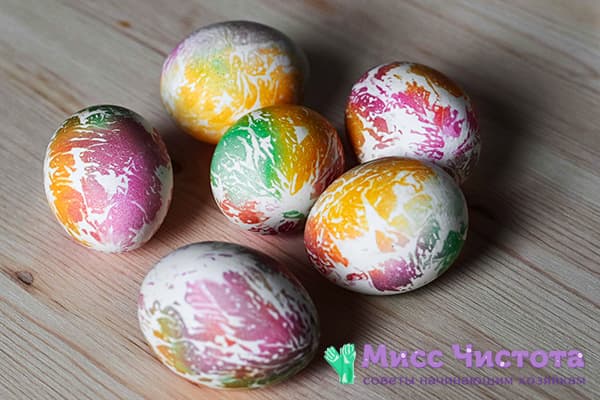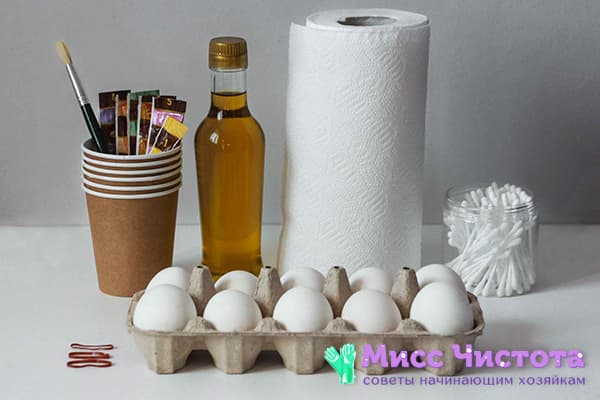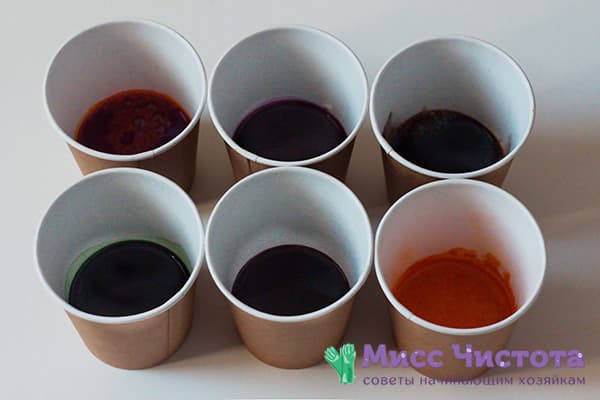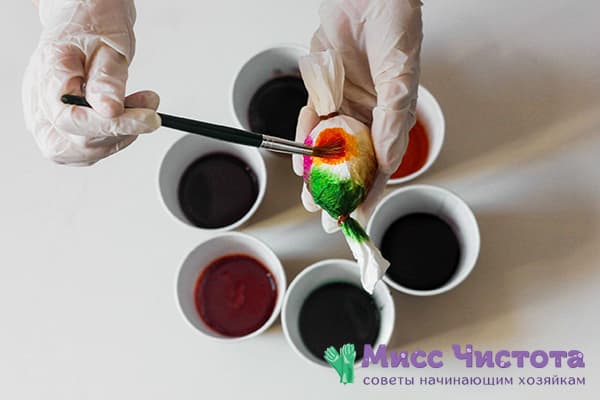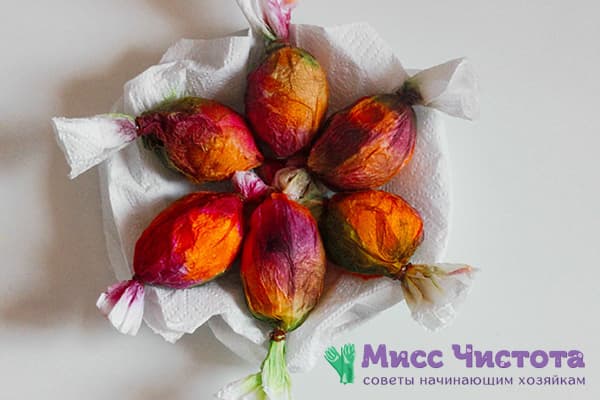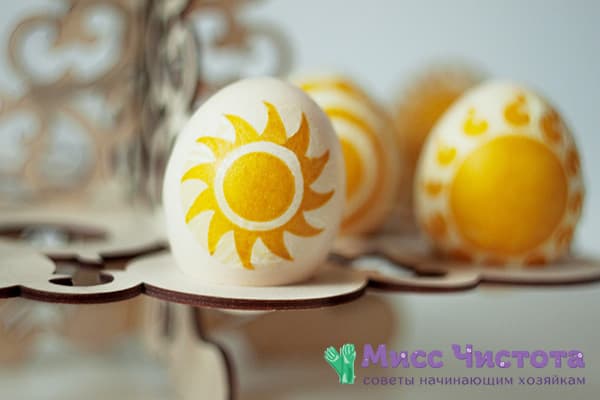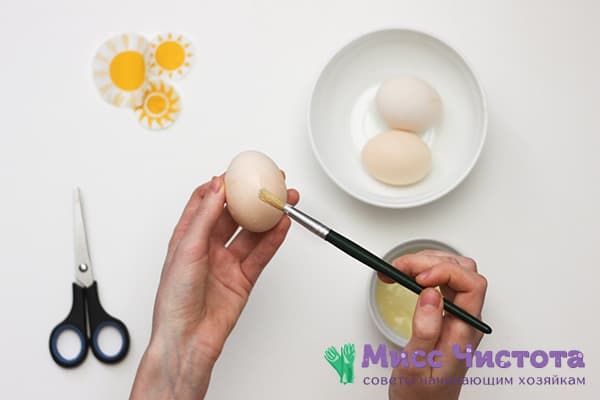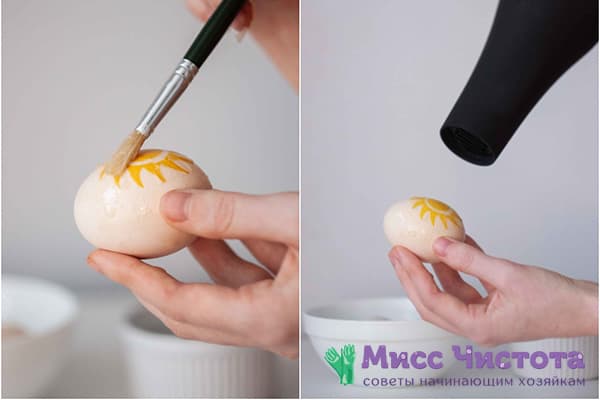You haven't tried it yet: coloring eggs for Easter using colored napkins
Along with spring, a wonderful, bright holiday comes to our homes - Easter. Preparing for celebrations is always an exciting and creative process, which is traditionally enjoyed by both children and adults. The main symbols of these days are fragrant Easter cakes, curd Easter cakes and, of course, colored eggs. Today I want to share with you step-by-step recipes for creating unusual patterns that will make your paints unique. Painting eggs for Easter with napkins is a fun activity that can result in real spring masterpieces.
Master class on creating decor using napkins
We will need:
- food colors of different colors;
- chicken eggs, preferably white;
- water;
- white table napkins or paper towels;
- cotton buds;
- disposable cups;
- gloves;
- threads or elastic bands;
- vegetable oil.
Step-by-step instruction:
- Eggs should be hard boiled. In this case, before cooking, you can add a pinch of salt to cold water - this will protect the shell from cracking.
- Each dye, according to the instructions on the package and recommendations for use, must be diluted in water in a separate disposable cup. Mix the colored solutions thoroughly with cotton swabs. To enhance color fastness, you can add 1 tablespoon of 9% vinegar to each cup. It is better if the shades of dyes are harmoniously combined with each other.
- Use napkins or a piece of paper towel to wrap the boiled egg tightly. Secure the ends of the paper with thread or an elastic band. To facilitate the dyeing process, you can pre-moisten the shell with water.
- Wear gloves. Alternately, using colored sticks (you can use a brush or a pipette), apply bright blots to the eggs wrapped in napkins, filling all the white space with rainbow stains. The size of the spots can vary, as can their shape.
- Leave the eggs to dry overnight. Wait until the wipes dry completely. You can speed up the dyeing process with a hairdryer. Carefully remove the paper and admire the original color design on your paints.
- For a spectacular shine, you can rub the shell with sunflower oil.
Paintings using decoupage technique
Another original way of coloring eggs for Easter is associated with the decoupage technique. Colorful and bright napkins should be used here. However, food coloring is not required in this case. The obvious bonuses of this type of coloring are that you don’t have to get your hands dirty, and the result will definitely surprise those who are accustomed to traditional methods of coloring Easter eggs.
We will need:
- chicken eggs, preferably white;
- multi-layer paper napkins with patterns;
- egg whites;
- brush;
- scissors;
- hairdryer
How to make Easter eggs using napkins - step-by-step master class:
- Cut out a piece of a design from a napkin - for example, a flower or a pattern.
- Take a raw egg and separate the white from the yolk. Using a fork or whisk, beat the egg white until foamy.This will be a kind of glue, thanks to which the cut out pattern will be firmly fixed on the surface of the shell.
- Hard-boil well-washed eggs, adding salt to the water to protect the shell.
- Coat a boiled and cooled egg with beaten egg white in a certain place using a brush. Place the pattern cut out of the napkin onto the shell and smooth the pattern with a brush dipped in egg white.
- Glue other pictures in the same way, covering the entire surface of the shell with pictures.
- Dry the decorated eggs with a hairdryer.
- Cover the paints with white again to secure the decoupage. This layer of protein will serve as a varnish and make the shell shiny.
- Dry the egg again. A luxurious Easter souvenir is ready!
Separate the top color layer. It is better to take napkins with a small pattern: such pictures will look more organic on the egg.
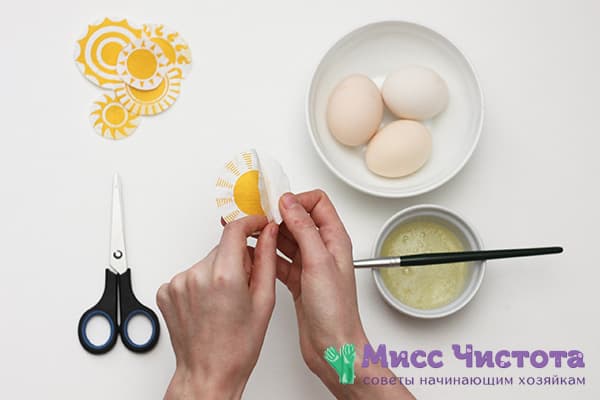
Cold eggs should not be poured with hot water, so that the shell does not crack and the dye does not get into the white. If this happens, it is better not to eat the egg.
By following the chosen recipe step by step, you will create a truly original Easter souvenir. It is customary for the whole family to dye eggs on the eve of Easter Sunday - after all, this is not just an old tradition, but one of the reasons to spend time with your closest and beloved people.
